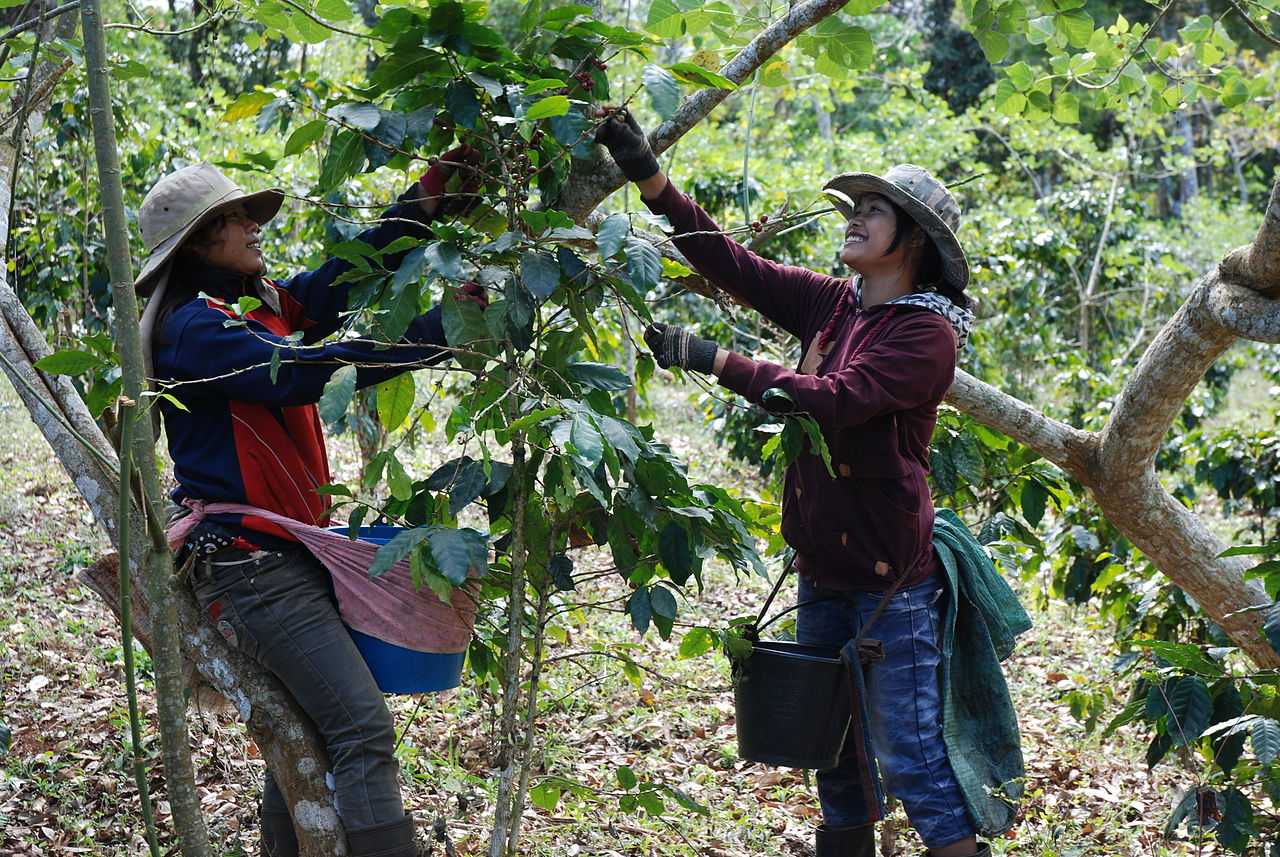BOLAVEN PLATEAU, Lao People’s Democratic Republic – Bounthong Thepkaisone wades through a five hectare coffee plantation near Mai Village. He has been growing coffee here since he left high school almost 30 years ago. He moves carefully among the plants, recalling what his parents taught him about nurturing coffee bushes, always giving them shade while removing the surrounding grass.
For Bounthong, producing coffee is both his present and future. He says he cannot imagine doing anything else. Coffee has been his main source of income allowing him to sustain his wife and their three teenaged children. The same can be said for many of the other 1 855 farming families in Bounthong’s community.
With the support of the Government of Lao PDR, the French Agency for Development (AFD) and FAO, the families founded the Bolaven Plateau Coffee Producers Cooperative (CPC) in 2007. Bounthong is its President.
The local farmers grow and market a unique organic coffee through the CPC. The coffee has a long tradition, explains Bounthong: “Our coffee is different from other coffees because it is grown in the Bolaven volcanic soil. This gives Bolaven coffee its unique taste – its sourness, bitterness and smell are all just right.”
CPC export numbers appear to support Bounthong’s enthusiasm. In 2012, CPC exported 603 tonnes of green coffee. By 2014, this one cooperative alone had annual exports exceeding 1 000 tonnes.
“I think the market and consumers are getting to know the high quality of Bolaven coffee,” Bounthong adds confidently.
Coffee is one of Lao PDR’s top income earners among its agricultural products exported. In 2012, the value of coffee exports amounted to US$60 million. In fact, Lao PDR maintains a discreet position in the world’s coffee export market.
According to official statistics, 2013 was a record year with almost 30 000 tonnes of green beans exported. However, that’s still a very modest amount compared with coffee exports from neighboring Viet Nam and so Laotian coffee producers would like to increase their exports.
Competing for a place in the global coffee market – a challenge
Coffee prices have declined by as much as 50 percent in recent years. While organized coffee producers like Bounthong, aided by organic certification, do not suffer much because of the large amounts they sell, individual producers in Lao PDR suffer more when the price falls because they get a much lower return on their investment.
“Price volatility is just one of the challenges facing the sector. We need to export and be competitive within the context of low prices, if we want to achieve our long-term goal,” says Khambone Phasouk, coordinator of the Lao Coffee Board.
The national body in charge of mobilizing the coffee sector is aiming to achieve an export goal of 300 000 tonnes of coffee by 2025, a tenfold increase on the 2013 record. But the CPC realizes it will need help to do so.
Promoting Lao coffee through international recognition – Geographical Indication (GI)
The coffee sector’s organizations agree that, without promotion, Lao coffee will struggle to meet its ambitious export targets.
They point out that Geographical Indication (GI) is a tool coffee producers can use to make Lao Bolaven coffee more exportable, recognizable and trustworthy for consumers around the world. That would lead to more stable incomes for the country’s coffee producers.
Currently contributing to the promotion of Lao coffee are internationally recognized standards such as Fair Trade, and Organic Production Certifications, which organizations such as CPC follow.
Other tools that can bring greater recognition to Lao coffee are the intellectual property legal protections, of which Geographical Indications are one part. GI can also lead to increased income for farmers.
“It’s difficult to make our national product known or popular in the global market, but GI will help promote Lao coffee,” says Bounthong.
Lao PDR is among other ASEAN countries that are enhancing their agricultural exports, boosting tourism and improving rural livelihoods thanks to the increasing number of agricultural and handicraft products that are protected by Geographical Indications. Thailand, Indonesia, Malaysia and Viet Nam collectively have more than 160 products registered as GI.
In Lao PDR, the Department of Intellectual Property (DIP) of the Ministry of Science and Technology is the competent authority that is coordinating the GI registration process and managing the GI national development.
“For the first time, Lao PDR will be able to register agricultural products thanks to the growing improvement in its capacity to set up and implement GI,” says Khanlasy Kheobounpanh, the Director General of the DIP. Two products are on the priority list for the country’s first GI applications: Bolaven coffee and Khao Kai Noy sticky rice.
“The Lao PDR Government is already in the process of setting up a trademark and GI division. Government staff and all the coffee supply chain participants are also enhancing their coordination and knowledge of GI implementation, thanks to a project supported by FAO and the French Agency for Development, and that is allowing Southeast Asian countries benefit from other countries more experienced with GI,” Khanlasy explains.
“Geographical Indication will bring Lao coffee the recognition of quality and prestige that it deserves.”
For its part, FAO continues to support the GI system working with governments and partners through the Promotion of Rural Development through Development of Geographical Indications (GI) at Regional Level in Asia.


















